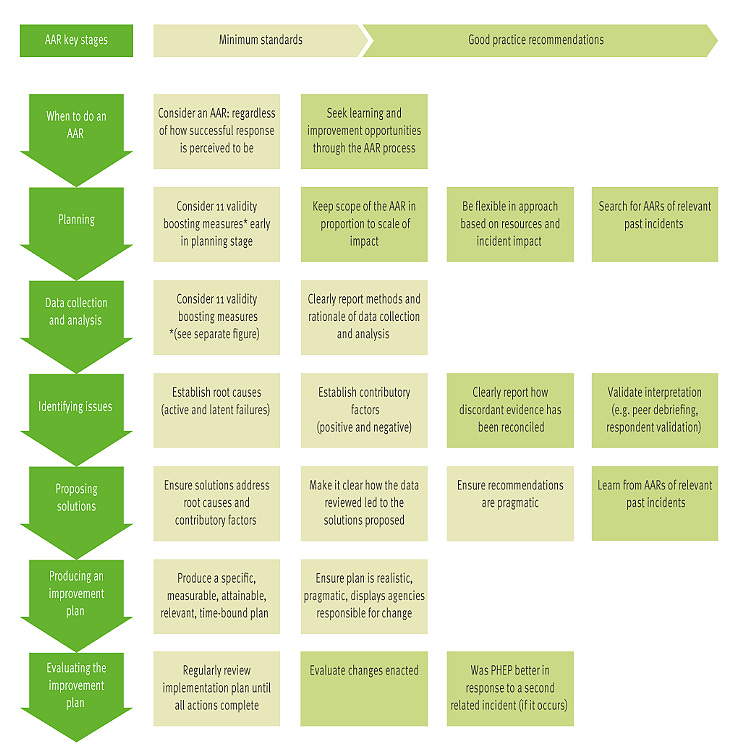From Battlefield to Boardroom: The Power of After-Action Reviews
Introduction
Have you ever wrapped up a massive project and felt that mix of exhaustion and relief, thinking, “Let’s never do that again,” only to find yourself in the same boat a few months later? Or maybe you’ve had an unexpected win and thought, “If only I knew how to replicate that!” This is where the magic of the After Action Review (AAR) comes into play.
Imagine a strategy session that not only helps you dissect what went right and wrong but also transforms your team’s performance for the future, it’s like a team huddle where everyone gets to learn the playbook. Originating from the U.S. Army, AARs have made their way into the heart of companies from tech powerhouses to retail innovators.
In this exploration, I’ll share how AARs can supercharge your team’s performance, align your strategies, and cultivate a vibrant learning culture. With three examples from various industries, you’ll see just how powerful these reviews can be in transforming not only outcomes but also the way your team thinks and operates.
Get ready to dive in and discover the potential for growth and innovation that an AAR can unlock!
What Is an After-Action Review, Anyway?
In simple terms, an AAR is a candid conversation right after an activity. The team gathers to ask four key questions: “What did we intend to achieve? What actually happened? Why did it happen? And what can we do to improve next time?” It’s really all about learning, not pointing fingers or placing blame.
Creating a safe space for honesty is crucial here. The Army discovered that when everyone, leaders included, can admit their mistakes and celebrate successes together, it leads to the best learning.
The vibe is “no fault, no blame.” The idea is to assume everyone did their best with the knowledge they had and to focus on improving the process rather than shaming individuals.
When done right, an AAR feels more like a team practice session aimed at growth than a somber evaluation. It’s short, specific, and most importantly, happens as soon as possible while memories are still fresh.
It’s all about ensuring your team is better prepared for the next project, mission, or event.
Boosting Team Performance through Continuous Learning
The most apparent benefit of AARs is supercharging team performance. Instead of plowing ahead, making the same mistakes, teams that do regular AARs create a continuous feedback loop for improvement. Research supports this claim: teams have seen a 25% performance boost by introducing After Action Reviews.
In a remarkable two-year trial at a large organization, refining the AAR process resulted in a substantial increase of over 150% in productivity. A Bain & Company case study showed that companies using structured post-mortems improved project ROI by 20% or more over 18 months. Those aren’t typos. AARs can translate hard lessons into tangible gains.
Why such improvements? Because AARs turn every project (even failures) into an opportunity to get better. Instead of sweeping problems under the rug, an AAR forces the team to confront what happened and why.
Perhaps the timeline slipped because of unclear roles, or a sales campaign failed due to the incorrect assumption. An AAR brings those insights to the forefront. Over time, this habit of candid reflection means fewer repeat mistakes and more polished processes.
A Harvard Business Review study noted that companies that truly master the AAR process “gain and sustain a competitive advantage” by avoiding errors that erode value and by adapting more quickly than their rivals to new challenges.
In other words, consistent AARs make your organization more agile and resilient: your team learns to fix problems quickly and even anticipate issues before they derail efforts.
A great example comes from the U.S. Army’s own experience. The Army’s elite Opposing Force (OPFOR) training brigade, comprising just 2,500 soldiers, would routinely defeat much larger and better-equipped units in war games.
How? OPFOR made AARs part of its DNA: after every exercise, they relentlessly analyzed what happened and fed the lessons straight back into the next run. This cycle of “execute, learn, improve, repeat” meant that OPFOR continued to become more intelligent and adaptive, often outmaneuvering forces twice their size.
Businesses that adopt a similar ethos of continuous improvement can reap significant performance benefits.
Keeping Strategy on Track
AARs, or After Action Reviews, are more than just a way to boost everyday task performance; they're like a secret weapon for executing your strategy. Imagine them as the GPS for your plans: they help you check if you’re on track and make adjustments when needed.
During an AAR, teams take a step back to compare the original goals with what actually happened, discussing any detours along the way. This process is crucial for keeping your big-picture strategy aligned with day-to-day actions.
Waiting until the end of a project to find out things have gone off course is a recipe for disaster. AARs help you make those crucial mid-course corrections.
Take agile software teams, for example. They often hold short retrospectives (which are a form of AAR) at the end of each sprint. This approach enables them to adjust their priorities and tactics before diving into the next sprint, rather than proceeding blindly.
On a larger scale, companies can break hefty projects into phases, each followed by an AAR, to create feedback loops that keep everything aligned with the strategy. One cool technique inspired by the Army is the "Before Action Review."
It’s basically a pre-project AAR where teams reflect on past lessons and anticipate challenges before they kick things off. Answering a few standard questions can help unify everyone’s objectives and lay a solid foundation for effective AARs as the work unfolds.
The real magic of AARs? They give organizations agility. When teams embrace this way of thinking, they avoid getting stuck on autopilot. They continuously ask, “Is what we’re doing working? If not, how can we switch things up?”
Consider British Petroleum, which utilized AARs to save millions by rapidly sharing fixes across its oil rigs. Even the US Army learned from past mistakes by systematically reviewing each exercise or mission.
As one HBR article put it, the best teams don’t just compile reports that collect dust; they actively integrate their learnings and apply them back into their real-time execution.
The result? A strategy that’s not just a static PowerPoint slide but a living, breathing game plan that evolves with every lesson learned.
Building a Learning Culture (No Blame, No Excuses)
One of the most notable benefits of adopting After-Action Reviews (AARs) is how they can significantly enhance your organizational culture. If you're aiming to be a true learning organization, one that adapts, innovates, and continually seeks ways to improve, AARs can help you achieve this goal.
They make it clear that every experience is a chance to learn something new. When teams know that every project concludes with an honest debrief, they begin to pay closer attention to the outcomes and think critically about their work.
Over time, this fosters a culture where accountability and openness thrive: where the organization holds itself accountable for improvement and is comfortable discussing what happened.
A key factor in making AARs effective is psychological safety. Leaders need to create an environment where it’s okay to admit mistakes or disagree with the rest of the group.
In a good AAR, even interns can speak up in front of VPs, and the marketing team can inform the CEO that a campaign plan didn't meet expectations, without fearing for their jobs. The no-blame vibe of AARs (think no personal attacks or shaming) really helps encourage honest conversations.
Take Google, for example: their engineering teams treat post-incident reviews as completely blameless, assuming everyone had good intentions while focusing on how the process or some assumptions might have led to a hiccup. Google gets that if people are scared of punishment, they’ll hide problems, but if there's trust in the process, they’ll raise issues early on, which leads to better solutions.
Making AARs a regular thing also sends a strong message: learning is what we value here. Wins aren’t just high-fived and forgotten; losses aren’t swept under the rug, everything is evaluated for takeaways.
When a company like Microsoft holds postmortems after every project (even the ones that went well) and shares those reports internally, it demonstrates that improvement is something everyone is part of.
At consulting firm Jump Associates, they hold debriefs after every client meeting, involving everyone from junior staff to the CEO, to give and receive feedback. This kind of ritual breaks down barriers and hierarchies, nurturing a culture where continuous learning is simply “how we roll.”
Employees start to feel comfortable raising their hands to say, “Here’s what I think went wrong” or “I have an idea for next time.” Over time, that kind of openness becomes an integral part of the company’s identity, making it a highly attractive place for top talent who want to learn and grow.
In short, AARs help foster a learning culture by normalizing reflection and humility. As one leadership expert put it, the AAR has been called “one of the most successful organizational learning methods yet devised,” but it only works if it’s done with sincerity.
Avoid falling into the trap of turning it into just another checkbox exercise, where nothing meaningful is said. Instead, leaders should treat AARs as a special time for honest conversation and experimentation. When done right, AARs can transform your culture into one that craves improvement and isn’t afraid to face reality.
Real-World Examples: AARs Beyond the Usual Suspects
While AARs are rooted in the military, many businesses have quietly incorporated them into their core operations, reflection, and improvement processes. Here are three companies applying AAR principles in ways that directly impact performance.
1. Chevron: Embedding AARs into Global Operations
Chevron integrated After-Action Reviews into its Operational Excellence Management System, particularly across complex capital projects. After a major offshore drilling initiative, cross-functional AARs revealed breakdowns in vendor timing and logistics. Those lessons drove procedural changes across global sites, preventing the same issues from recurring.
Takeaway: AARs turned field experience into enterprise-wide operational gains.
2. Bridgewater Associates: Debriefing as a Cultural Norm
At Bridgewater, post-decision reviews function much like AARs. Teams dissect investment decisions, flag unexpected outcomes, and log lessons in a firm-wide system. This constant feedback loop fuels sharper forecasting and intellectual accountability.
Takeaway: AARs reinforce the firm’s data-driven culture and sharpen decision-making over time.
3. H-E-B Grocery: Tactical AARs for Emergency Response
When Winter Storm Uri (2021) hit Texas, H-E-B conducted rapid AARs at every level from store managers to supply chain leadership. These debriefs uncovered supply and power vulnerabilities, leading to swift upgrades in emergency protocols.
Takeaway: AARs helped H-E-B maintain operations during crises and earned public trust when it mattered most.
Putting AARs into Practice: Quick Tips for Leaders
Ready to try After Action Reviews with your own team? Here are some practical takeaways to get you started immediately:
Make AARs a Habit: Schedule AARs consistently, ideally right after any significant project, event, or milestone. Don’t just reserve them for failures; do them after wins too (so you can repeat what worked!). The key is to normalize reflection as part of the workflow, not as a rare exception. Even a 15-minute debrief after a client call or sprint can yield insights while they’re fresh.
Ask the Right Questions: Keep the discussion focused with a few core questions: What was supposed to happen? What actually happened? Why was there a difference? What will we do next time?. Start by reviewing the goals and expectations, then compare them to reality. Probe into the root causes (“Why did things go this way?”), and finish by identifying concrete action items or lessons for the future.
Foster a Safe, Blame-Free Environment: Emphasize that the AAR is not about blaming individuals; it’s about improving the team as a whole. Set “ground rules” that everyone’s input is valued, rank is left at the door, and candor is a must. Leaders should go first in admitting their own missteps or uncertainties; this models humility and encourages others to speak up. If someone made a mistake, discuss how the system or process allowed it and how to prevent it, rather than “who screwed up.” When people see that an AAR won’t turn into a witch hunt, they’ll contribute more openly.
Involve the Whole Team: An AAR shouldn’t be a closed management review; include everyone who was involved in the project or event. Different perspectives will reveal different aspects of what happened. Sometimes, even customers, partners, or other stakeholders can offer valuable insights. The richness of an AAR comes from hearing all sides, the view from the front lines, and the control room. Ensure that someone facilitates so that even the quiet voices are heard.
Focus on Actionable Outcomes: A review isn’t worth much if nothing changes afterward. Aim to end each AAR with 2-3 clear lessons or follow-up actions. Assign responsibility for any action items, who will do what by when, to ensure the learning is implemented. Also, find a way to share the lessons. Many organizations create brief AAR write-ups or add learnings to a knowledge base so others can find them. The point is to prevent the “we’re discovering the same mistakes all over again” syndrome.
By following these steps, you can avoid common pitfalls. Instead, you’ll kickstart a cycle of continuous improvement. Start small, maybe do a quick AAR at your next team meeting about how that last product demo went. You might be surprised by the insights your team surfaces once you give them the forum. And once you act on a few AAR takeaways and see results, the buy-in will only grow.
Conclusion
Remember, the AAR is a simple idea with radical implications. It says that every day is a school day, every project, meeting, or mission can teach us something if we’re willing to learn.
In the fast-paced world of business (and high-stakes world of private equity), it’s easy to jump to the next deal or task without pausing. AARs urge us to hit “pause” and reflect, so that we don’t rob ourselves of hard-earned lessons.
As one Army veteran-turned-executive might say, “The only truly bad mistake is the one we make twice.” So gather your team, crack open the discussion, and turn those war stories and projects into fuel for better performance. After-action reviews might just become your secret weapon for long-term success.
Sources
Insights and data in this newsletter are drawn from publications and research, including:
U.S. Army Training Circular 25-20 (1993) – A Leader’s Guide to After-Action Reviews.
Harvard Business Review (Darling et al., 2005) – “Learning in the Thick of It.”
Wharton@Work – Nano Tools for Leaders (Henshaw, 2012). “After Action Reviews.”
Harvard Business Review (Fletcher, Cline & Hoffman, 2023). “A Better Approach to After-Action Reviews.”
Google Site Reliability Engineering Book (2016). “Postmortem Culture: Learning from Failure.”
LinkedIn – Matt Green post (2022). A healthcare executive notes that “Research shows that individual and team performance can improve by 25% by using After Action Review.”





